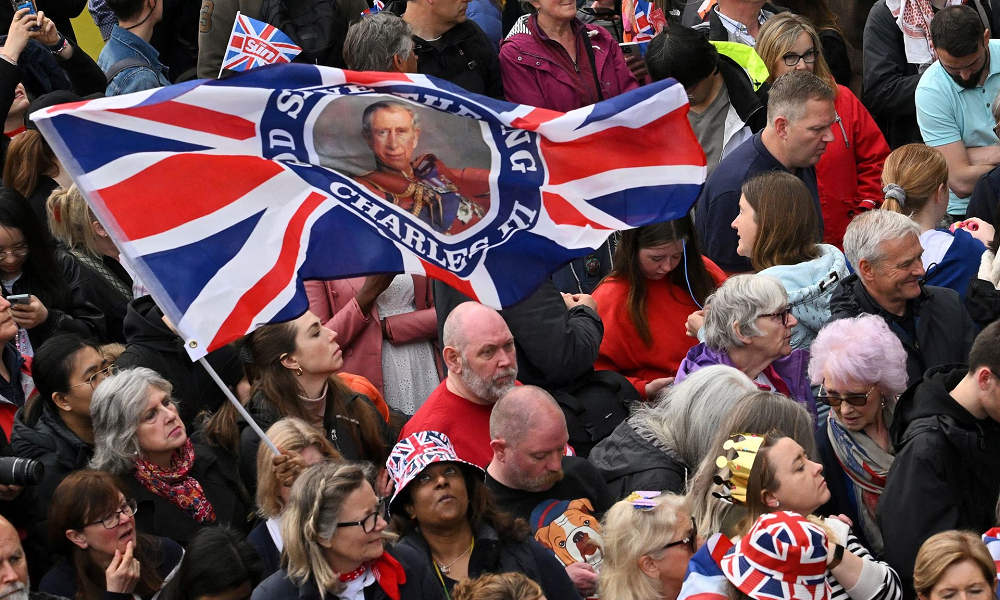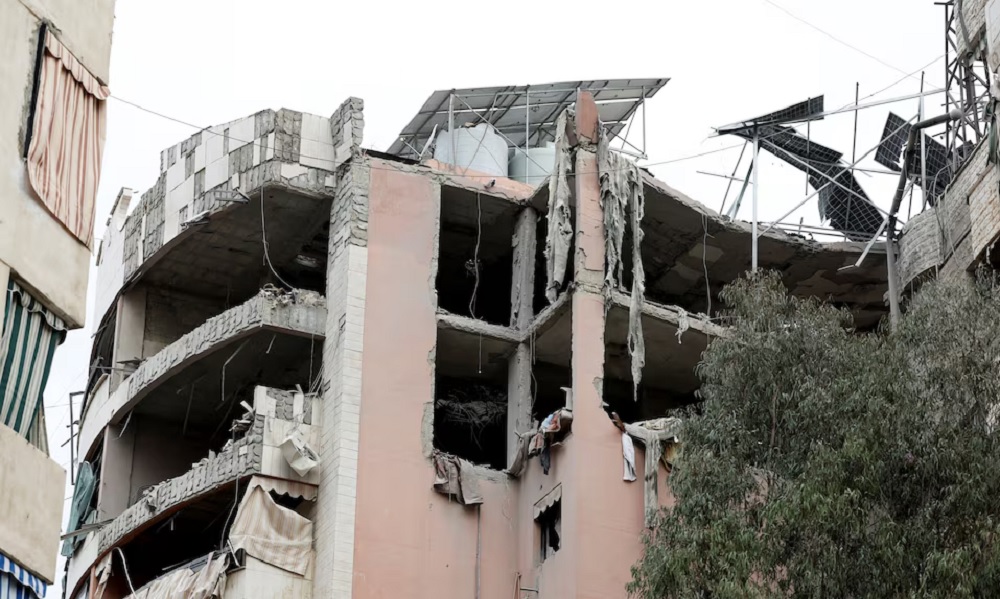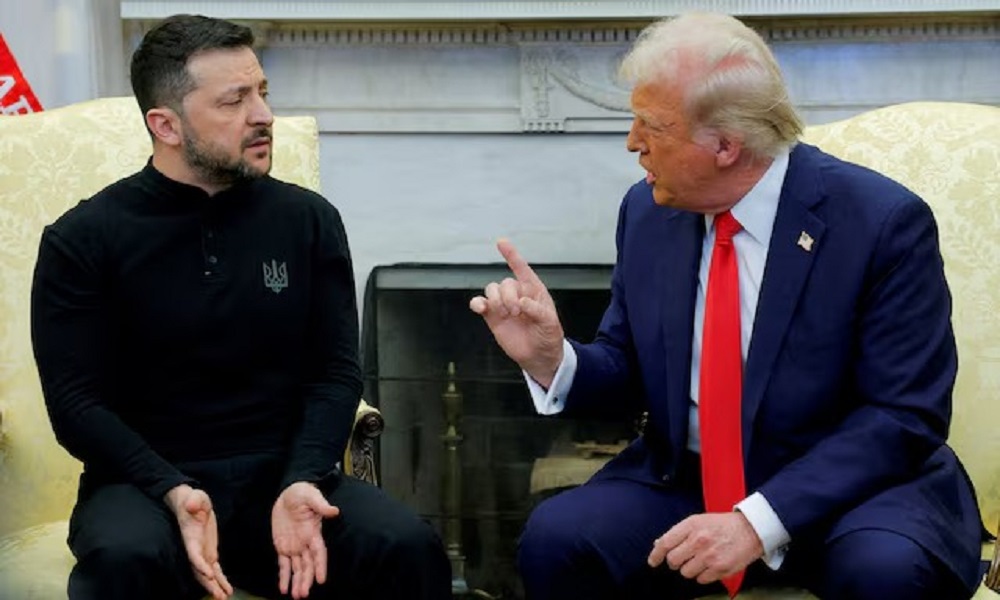World
Crowds gather in London for moment in history as King Charles is crowned

Crowds from across Britain and the world gathered on Saturday in London where Charles III will be crowned king in Britain’s biggest ceremonial event for seven decades, a sumptuous display of pageantry dating back 1,000 years.
Charles succeeded his mother Queen Elizabeth when she died last September and at 74, he will become the oldest British monarch to have the 360-year-old St Edward’s Crown placed on his head as he sits upon a 14th century throne at London’s Westminster Abbey.
Watched by about 100 heads of state and dignitaries, including U.S. first lady Jill Biden, and millions on television, Charles follows his predecessors from the time of William the Conqueror in 1066 in being crowned at the abbey.
His second wife Camilla, 75, will be crowned queen during the two-hour ceremony which, while rooted in history, will attempt to present a forward-looking monarchy.
With Britain struggling to find its way in the political maelstrom after its exit from the European Union and maintain its standing in a new world order, the royal family still provides an international draw, a vital diplomatic tool and a means of staying on the world stage.
“No other country could put on such a dazzling display – the processions, the pageantry, the ceremonies, and street parties,” Prime Minister Rishi Sunak said.
“It’s a proud expression of our history, culture, and traditions. A vivid demonstration of the modern character of our country. And a cherished ritual through which a new era is born.”
Despite Sunak’s enthusiasm, the coronation is taking place amid a cost of living crisis and public scepticism, particularly among the young, about the role and relevance of the monarchy.
Saturday’s event will be on a smaller scale than that staged for Queen Elizabeth in 1953, but will still aim to be spectacular, featuring an array of historical regalia from golden orbs and bejewelled swords to a sceptre holding the world’s largest colourless cut diamond.
By early morning tens of thousands had begun massing along The Mall, the grand boulevard leading up to Buckingham Palace, with the crowd more than 20 people deep in some places, as troops in ceremonial uniforms and marching bands went past.
Rachel Paisley, a 45-year-old housewife, said she had travelled from her home in Switzerland with her husband and two children.
“It is a moment in history. We wanted to be here to see it and create some memories,” she said next to her son, who was wearing a Charles face mask, and her daughter, who sported a Union flag head band.
After the service, Charles and Camilla will depart in the four-tonne Gold State Coach that was built for George III, the last king of Britain’s American colonies, riding back to Buckingham Palace in a one-mile procession of 4,000 military personnel from 39 nations.
It will be the largest show of its kind in Britain since the coronation of Charles’ mother.
At the start of ceremonies, Charles and Camilla will travel from Buckingham Palace to the abbey in the modern Diamond State Jubilee Coach, with the service due to begin at 1000 GMT.
They will pass cheering crowds but also what anti-monarchists say will be the biggest protest mounted by republicans. More than 11,000 police will be on duty ready to stamp out any attempted disruption.
Once at the abbey, much of the ceremony will feature elements that Charles’ forebears right back to King Edgar in 973 would recognise, officials said. Handel’s coronation anthem “Zadok The Priest” will be sung as it has at every coronation since 1727.
But there will be new elements, including an anthem composed by Andrew Lloyd Webber, famed for his West End and Broadway theatre shows, and a gospel choir.
A Christian service, there will also be an “unprecedented” greeting from faith leaders and Charles’s grandson Prince George and the grandchildren of Camilla will act as pages.
However, there will be no formal role for either Charles’ younger son Prince Harry, after his high-profile falling out with his family, or his brother Prince Andrew, who was forced to quit royal duties because of his friendship with late U.S. financier Jeffrey Epstein, a convicted sex offender.
Charles will swear oaths to govern justly and uphold the Church of England – of which he is the titular head – before the most sacred part of the ceremony when he is anointed on his hands, head and breast by Archbishop of Canterbury Justin Welby with holy oil consecrated in Jerusalem.
After Charles is presented with symbolic regalia, Welby will place the St Edward’s Crown on his head and the congregation will cry “God save the King”.
His eldest son and heir Prince William, 40, will then pay homage, kneeling before his father, placing his hands between those of the king and pledging his loyalty as “your liege man of life and limb”.
Welby will call for all those in the abbey and across the nation to swear allegiance to Charles – a new element that replaces the homage traditionally sworn by senior dukes and peers of the realm.
However, that has caused controversy with anti-monarchist group Republic calling it offensive, forcing Welby to clarify it is an invitation not a command.
After returning to Buckingham Palace, the royals will make a traditional appearance on the balcony, with a fly-past by military aircraft.
Also in traditional British fashion, the weather in London could feature heavy bursts of rain, forecasters said, which could mean a slimmed down or even cancelled fly-past.
Celebrations will continue on Sunday with nationwide street parties and a concert at the king’s Windsor Castle home, while volunteering projects will take place on Monday.
“When you see everyone dressed up and taking part it is just fantastic. It makes you so proud,” said teacher Andy Mitchell, 63, who left his house in the early hours to get into London.
“My big concern is that younger people are losing interest in all of this and it won’t be the same in the future.”
World
As Iran tensions build, US military moves warplanes to reinforce Middle East
U.S. President Donald Trump threatened Iran on Sunday with bombing and secondary tariffs if Tehran did not come to an agreement with Washington over its nuclear program.

U.S. Defense Secretary Pete Hegseth has reinforced U.S. military capability in the Middle East with more warplanes, the Pentagon said on Tuesday, amid a more than two-week-old U.S. bombing campaign in Yemen and mounting tensions with Iran, Reuters reported.
The Pentagon’s brief statement did not specify which aircraft were being deployed or where precisely they were sent.
However, as many as six B-2 bombers have relocated in the past week or so to a U.S.-British military base on the Indian Ocean island of Diego Garcia, according to U.S. officials, speaking on condition of anonymity.
Experts say that puts the B-2s, which have stealth technology and are equipped to carry the heaviest U.S. bombs and nuclear weapons, in an ideal position to operate in the Middle East.
“Should Iran or its proxies threaten American personnel and interests in the region, the United States will take decisive action to defend our people,” Pentagon spokesperson Sean Parnell said in a statement.
The U.S. military’s Strategic Command has declined to say how many B-2s have reached Diego Garcia and noted that it does not comment on exercises or operations involving the B-2.
There is already considerable firepower in the Middle East and the U.S. military will soon have two aircraft carriers in the region, read the report.
U.S. President Donald Trump threatened Iran on Sunday with bombing and secondary tariffs if Tehran did not come to an agreement with Washington over its nuclear program.
While B-2 bombers have been employed to strike buried Houthi targets in Yemen, most experts say use of the stealthy bomber is overkill there and the targets aren’t buried so deeply.
However, the B-2 is equipped to carry America’s most potent bomb — the 30,000-pound GBU-57 Massive Ordnance Penetrator. That is the weapon that experts say could be used to strike Iran’s nuclear program.
There are only 20 B-2 bombers in the Air Force’s inventory so they are usually used sparingly.
Iran’s Supreme Leader Ayatollah Ali Khamenei said on Monday the U.S. would receive a strong blow if Trump followed through with his threats.
Revolutionary Guards Aerospace Commander Amirali Hajizadeh threatened U.S. forces in the Middle East, noting American bases in the Middle East and adding: “They are in a glass house and should not throw stones.”
One official told Reuters that the U.S. military was also moving some air defense capabilities from Asia to the Middle East.
In his 2017-2021 term, Trump withdrew the U.S. from a 2015 deal between Iran and world powers that placed strict limits on Tehran’s disputed nuclear activities in exchange for sanctions relief. Trump also reimposed sweeping U.S. sanctions.
Since then, Iran has far surpassed that deal’s limits on uranium enrichment.
Western powers accuse Iran of having a clandestine agenda to develop nuclear weapons capability by enriching uranium to a high level of fissile purity, above what they say is justifiable for a civilian atomic energy program. Tehran says its nuclear program is wholly for civilian energy purposes.
World
Israel kills Hezbollah official in deadly Beirut airstrike

An Israeli airstrike killed four people including a Hezbollah official in Beirut’s southern suburbs on Tuesday, a Lebanese security source said, further testing a shaky ceasefire between Israel and Iran-backed Hezbollah.
The Israeli military said the official – Hassan Bdeir – was a member of a Hezbollah unit and Iran’s Quds Force, and he had assisted the Palestinian group Hamas in planning a “significant and imminent terror attack against Israeli civilians,” Reuters reported.
The Lebanese security source said the target was a Hezbollah figure whose responsibilities included the Palestinian file. The Lebanese health ministry said the strike killed four people – including a woman – and wounded seven others.
It marked Israel’s second airstrike in the Hezbollah-controlled suburb of Beirut in five days, adding to strains on the U.S.-brokered ceasefire that ended last year’s devastating conflict.
The attacks on Beirut’s southern suburbs have resumed at a time of broader escalation in the region, with Israel having restarted Gaza strikes after a two-month truce and the United States hitting the Iran-aligned Houthis of Yemen in a bid to get them to stop attacking Red Sea shipping.
Hezbollah lawmaker Ibrahim Moussawi said the Israeli attack amounted to “a major and severe aggression that has escalated the situation to an entirely different level”.
Speaking in a televised statement after visiting the building that was struck, he called on the Lebanese state to “activate the highest level of diplomacy to find solutions”.
Israeli Foreign Minister Gideon Saar said the eliminated Hezbollah operative posed “a real and immediate threat”. “We expect Lebanon to take action to uproot terrorist organizations acting within its borders against Israel,” he said.
Israel dealt severe blows to Hezbollah in the war, killing thousands of its fighters, destroying much of it arsenal and eliminating its top leadership including Hassan Nasrallah.
Hezbollah has denied any role in recent rocket attacks from Lebanon towards Israel, including one that prompted Israel to carry out an airstrike on the southern suburbs last Friday.
Tuesday’s strike in the early hours appeared to have damaged the upper three floors of a building, a Reuters reporter at the scene said, with the balconies of those floors blown out.
The glass on the floors below was intact, indicating a targeted strike. Ambulances were at the scene as families fled to other parts of Beirut.
There was no advance warning, in contrast to the attack on Friday when the Israeli military announced which building it intended to hit and ordered residents to leave the area.
Lebanese President Joseph Aoun condemned the latest airstrike, calling it a “dangerous warning” that signals premeditated intentions against Lebanon, which would intensify diplomatic outreach and mobilise international allies.
Lebanese Prime Minister Nawaf Salam said the strike was a flagrant breach of a U.N. Security Council Resolution upon which the ceasefire was based, and the ceasefire arrangement.
U.S. BACKS ISRAEL
The ceasefire agreement demanded that southern Lebanon be free of Hezbollah fighters and weapons, that Lebanese troops deploy into the area, and that Israeli troops withdraw.
But each side accuses the other of failing to implement the terms fully. Israel says Hezbollah still has infrastructure in the south, while Lebanon and Hezbollah say Israel is occupying Lebanese soil by not withdrawing from five hilltop positions.
The U.S. State Department said that Israel was defending itself from rocket attacks that came from Lebanon and that Washington blamed “terrorists” for the resumption of hostilities.
“Hostilities have resumed because terrorists launched rockets into Israel from Lebanon,” a State Department spokesperson said in an email, responding to a question from Reuters seeking reaction to Tuesday’s airstrike. Washington supported Israel’s response, the spokesperson said.
The Israel-Hezbollah conflict was ignited when Hezbollah opened fire in support of Hamas at the start of the Gaza war. It escalated in September when Israel went on the offensive, declaring the aim of securing the return home of tens of thousands of people evacuated from homes in the north.
The war uprooted more than a million people and killed at least 3,768 people in Lebanon, according to a Lebanese health ministry toll from November. Dozens more have been reported killed by Israeli fire since the ceasefire.
Lebanon’s figures do not distinguish between civilians and fighters.
During the war, Hezbollah strikes killed 45 civilians in northern Israel and the Israeli-occupied Golan Heights. At least 73 Israeli soldiers were killed in northern Israel, the Golan Heights, and in combat in southern Lebanon, according to Israeli authorities.
World
Trump says Zelenskiy wants to back out of critical minerals deal

U.S. President Donald Trump said on Sunday Ukrainian President Volodymyr Zelenskiy wants to back out of a critical minerals deal, warning the Ukrainian leader would face big problems if he did.
“He’s trying to back out of the rare earth deal and if he does that he’s got some problems, big, big problems,” Trump told reporters.
“He wants to be a member of NATO, but he’s never going to be a member of NATO. He understands that.”
(Reuters)
-

 International Sports5 days ago
International Sports5 days agoChennai grapple with IPL home truth after Bengaluru defeat
-

 Health5 days ago
Health5 days agoGlobal organizations warn of health crisis due to aid cuts in Afghanistan
-

 World4 days ago
World4 days agoMyanmar quake death toll hits 1,700 as aid scramble intensifies
-

 Sport4 days ago
Sport4 days agoIPL 2025: Gujarat Titans beat Mumbai Indians by 36 runs
-

 Latest News3 days ago
Latest News3 days agoSwitzerland re-establishes presence in Kabul with humanitarian office
-

 Latest News3 days ago
Latest News3 days agoPakistan plans to expel 3 million Afghan refugees this year
-

 World3 days ago
World3 days agoSouth Korea, China, Japan seek regional trade amid Trump tariffs
-

 Regional3 days ago
Regional3 days agoIran’s Khamenei warns of ‘strong’ response if US attacks























